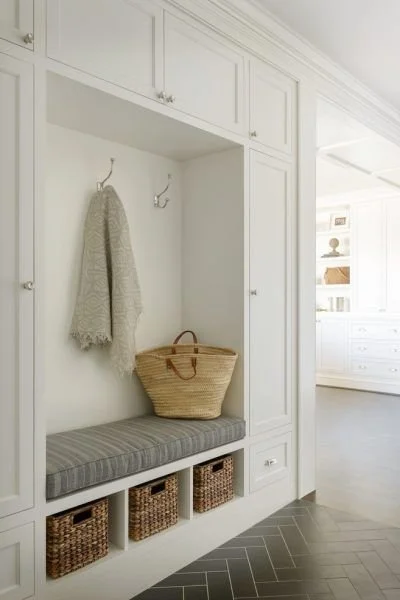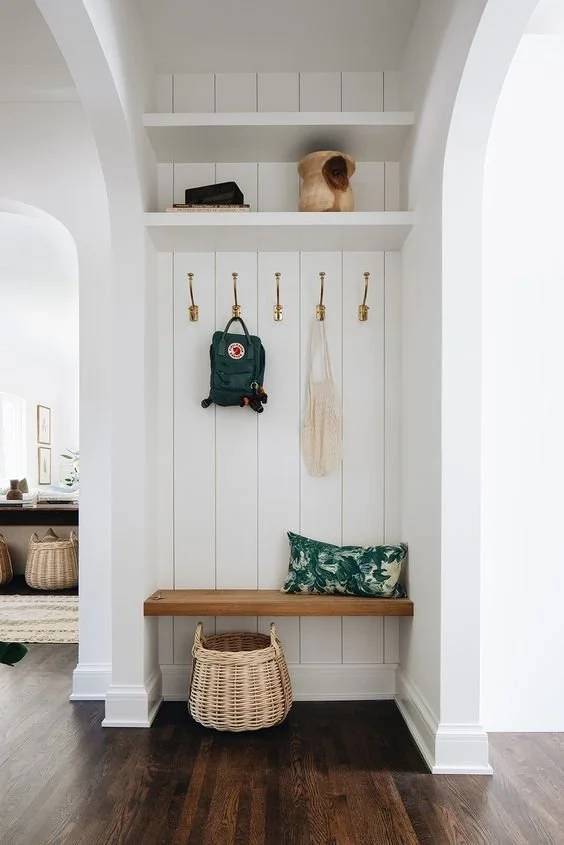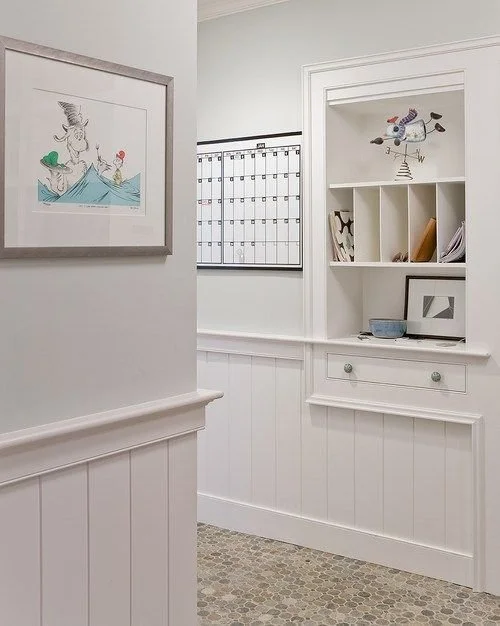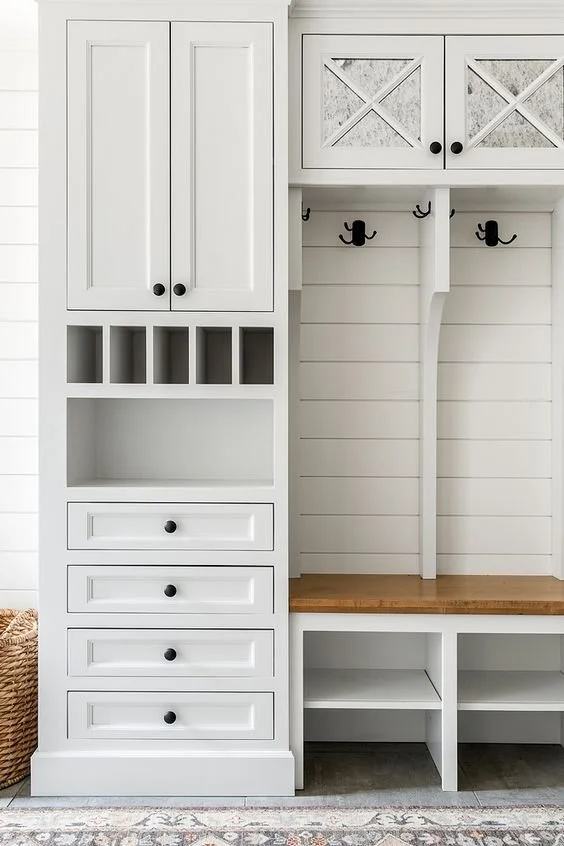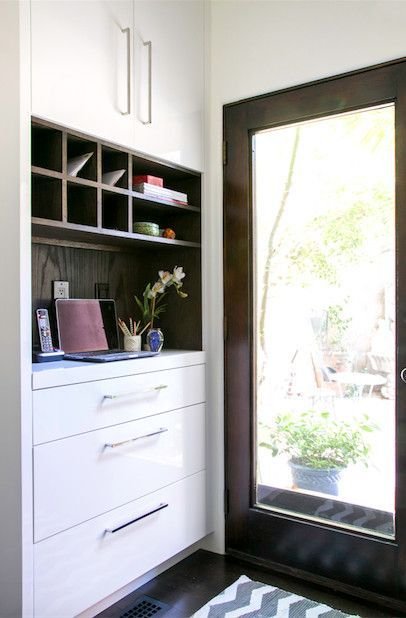How to create a successful ‘Drop Zone’
5 Questions you should ask yourself when planning your ‘Drop Zone’
What is a drop zone?
A drop zone as a dedicated place to set items as you are entering or exiting the home. Depending on your personal performance needs this could have a more permanent or temporary design structure. In a permanent way, this could be a place to set purses, computer bags, backpacks as well as hold these items as the dedicated setting spot in the home for the majority of time they are within the home. In a more temporary setting it could better suit unloading the car of groceries or other purchased items or act as a gathering place of packages to leave the home. In a transitional view, a drop zone could also be a place to set physical mail and packages as the storing place until you are ready to file organize those items at a later time.
Drop zones are essential to the functionality of any home.
In our current world we are constantly entering and existing our homes, and bring with us physical items both ways. Whether it is items you are taking from the home, or bringing into the home, it is essential to have a planned exit and enter strategy to keep your home functioning in an organized way. And most imporantly, to keep Mom (and maybe Dad) from going crazy!
NO MORE to the thought process of “I’ll never have an organized home”, or “If my kids bring one more thing into this house!”. So many times, disorganization can be easily remedies by a simple shift of adding a system and spot in your house to hold the incoming and outgoing items.
Too much stuff?
Sure, we know we as a culture have a consumerism problem. Sure, we order a lot from Amazon and we could really look at cutting back. BUT, I think instead of looking at the input/output of physical items entering and exiting the home, the thought process should be shifted to designing and planning for a dedicated spot in the home with the sole purpose of capturing the functionality of this temporary placement of items.
Whether your home has an entire room dedicated as a drop zone, or you need to get creative about working a drop zone into a small footprint house, there are so many unique options for adding this extra level of performance into your space.
5 Questions you should ask when planning your ‘Drop Zone’:
What are my entry and exit points in my home?
What are the items that are typically coming in through those doors and where do I currently set those items? (Example: What door do you come in with groceries?, What door do the kids come in with backpacks)
What activities are taking place as you enter and exit the house? (Example: Do you take on/off your shoes, set down a purse/keys, or perhaps grab a bottle of water as you exit?)
Are there currently any disorganize areas in my house that would benefit if those items had a specific place to live? (Example: Piles of shoes, piles of mail)
Fill in the blank:
If (blank) had an assigned place to live, my house would feel like a more organized place.
Fill in the blank: If I had (blank) located where I leave my house, it would make my life so much easier. (Example: We have planned beverage refrigerators by the back door to grab a drink on the way out of the house).
Meet Haley!
Designer and co-owner of Home Girls
“What I love most about design is the ability to see an idea come to life in front of your eyes. Design can transform the way you feel and live in your space. Design decisions impact the openness you feel to invite others into your home, as well as meet the performance needs of busy families. Design is not just the culmination of pretty pictures, but the transformation of the lives lived within the home.” - Haley

